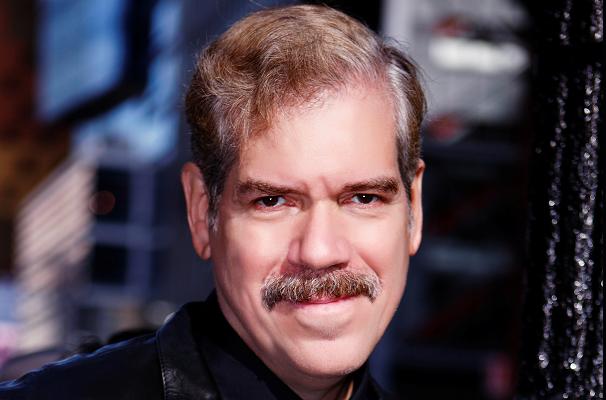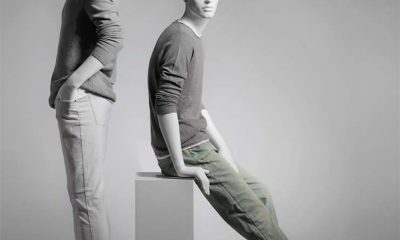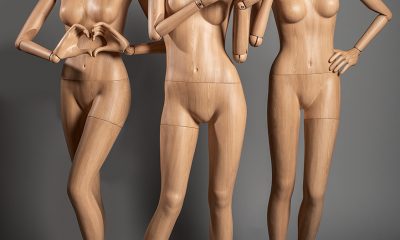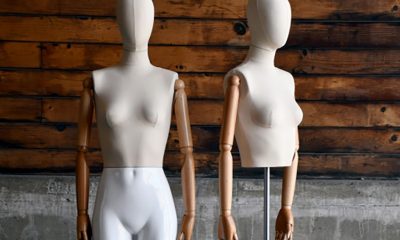They're the most iconic and effective tools available to visual merchandisers. Customers encounter them every day as they walk through our stores, or look longingly at our windows. A stroll down New York’s Fifth Avenue will reveal a plethora of the fabulous forms in stores from Saks Fifth Avenue to Uniqlo. Some may take them for granted, others simply think of them as fancy clothes hangers used to show merchandise — everything on a mannequin flies out the door. Today there are murmurings, if not outcries, for them to become more realistic, more representative of the average all-American shopper. Unfortunately, some don't see past the obvious.
Raymond Loewy was an important industrial designer of the early-to-mid 20th Century, who designed everything from lipstick to locomotives. Included in his portfolio are the Coca Cola bottle, the Studebaker automobile, the Greyhound bus and the logos for the U.S. Post Office, the Shell Oil Company and Lucky Strike Cigarettes. Loewy even designed the environment for NASA's Skylab. In some quarters, he was referred to as the father of industrial design. Before his illustrious career as an industrial designer, however, he had a brief stint with Macy's as a freelance window designer.
One day, he dressed a mannequin in an evening gown, put her in the window, focused two spotlights on her and quit the next day before Macy's could fire him. Why? In those days, retailers put everything they had into their windows. Raymond Loewy said no. He knew that his mannequin wasn't merely intended to sell the evening gown that day, but rather, to project Macy's brand image out onto the street, to engage passersby as they looked at his window. Loewy said, “Simplicity is the deciding factor in the aesthetic equation.”
Loewy's statement of similar sentiment to Constantin Brancusi's, “Simplicity is complexity resolved,” speaks to the magic of mannequins on two levels. Number one, mannequins are not merely fancy clothes hangers, they are important touchstones to the brand. They provide retailers with the opportunity to engage customers by letting them know, “This is who we are, this is what we have to say and this is how we say it.” It's not only about the merchandise the mannequin is presenting, although that is clearly important, it's also about the brand statement.
Number two, I'm certain Loewy would applaud so many of today's mannequin makers who have elevated the craft to an art form. And to those demanding more realism, I offer this: Craft becomes art when it moves the emotion and art moves the emotion when it is evocative, not overt, but rather suggestive of an idea.
In his iconic sculpture “Bird in Space,” Brancusi reduced the winged, beaked, feathered creature to a precious few gestures — this is art. Through simple lines, perhaps elongated, curvilinear or abstract, mannequin designers have provided retailers with the opportunity to elevate the in-store shopping experience for their customers by integrating art into the selling environment.
Yes, a mannequin will sell an evening gown any day, but it will also embed a visual brand image into the customer’s mind. In the words of Raymond Loewy, “I'm looking for a very high index of visual retention.” The mannequin in the show window should be memorable and recognizable, it should be the visual embodiment of the brand.
Eric Feigenbaum is a recognized leader in the visual merchandising and store design industries with both domestic and international design experience. He served as corporate director of visual merchandising for Stern’s Department Store, a division of Federated Department Stores, from 1986 to 1995. After Stern’s, he assumed the position of director of visual merchandising for WalkerGroup/CNI, an architectural design firm in New York City. Currently, he serves as the chair of the Visual Merchandising Department at LIM College (New York), and was also an adjunct professor of Store Design at the Fashion Institute of Technology. In addition to being the New York Editor of VMSD magazine, Eric is also a founding member of PAVE (A Partnership for Planning and Visual Education). Currently, he is also president and director of creative services for his own retail design company, Embrace Design.


 Headlines1 week ago
Headlines1 week ago
 Photo Gallery24 hours ago
Photo Gallery24 hours ago
 Headlines2 weeks ago
Headlines2 weeks ago
 Headlines2 weeks ago
Headlines2 weeks ago
 Sector Spotlight1 week ago
Sector Spotlight1 week ago
 Headlines1 week ago
Headlines1 week ago
 Headlines1 week ago
Headlines1 week ago
 Headlines2 days ago
Headlines2 days ago













